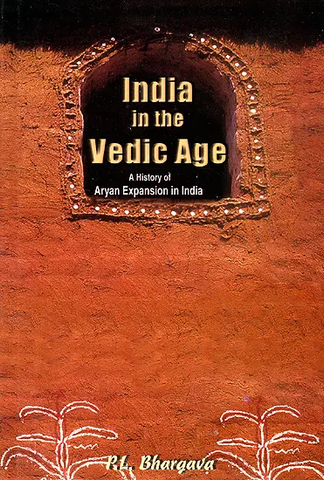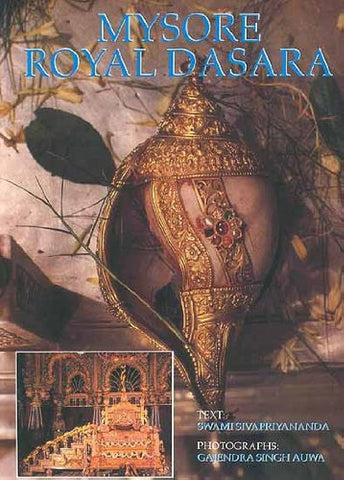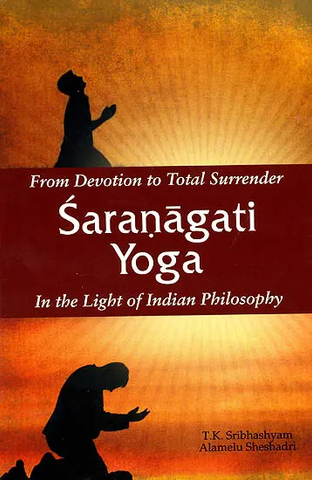Your cart is empty now.
Your search for "purana" revealed the following:
Sri Visnu Puranam: (English Translation in 2 Vol Set)
The word Puranam means that which was composed first-purvasmin bhutam puranam. There are eighteen Mahapuranams-. (Vide This work, III.vi.20). They form three groups, namely, sattvika, rajasa and tamasa. The six, Matsya, Kurma, Linga, Siva, Skanda and Agni are tamasa Puranams. The six Brahmanda, Brahmavaivarta, Markandeya, Bhavirya, Vamana, and Brahma are rajasa Puranam-s and the six Visnu, Naradiya, Bhagavata, Garuda, Padma and Varaha are sattvika Puranam-s. This classification of the Puranams and other works according to the qualities which prevail in them is found in the Uttara Khanda of Padma Puranam. It is briefly indicated in the Matsya Puranam also. Though... Read More
Engish, 649 Pgs. (HB)Sri Visnu Puranam: (English Translation in Set of 2 Volumes)
The word Puranam means that which was composed first-purvasmin bhutam puranam. There are eighteen Mahapuranams-. (Vide This work, III.vi.20). They form three groups, namely, sattvika, rajasa and tamasa. The six, Matsya, Kurma, Linga, Siva, Skanda and Agni are tamasa Puranams. The six Brahmanda, Brahmavaivarta, Markandeya, Bhavirya, Vamana, and Brahma are rajasa Puranam-s and the six Visnu, Naradiya, Bhagavata, Garuda, Padma and Varaha are sattvika Puranam-s. This classification of the Puranams and other works according to the qualities which prevail in them is found in the Uttara Khanda of Padma Puranam. It is briefly indicated in the Matsya Puranam also. Though... Read More
Engish 649 Pgs. (HB)Sri Visnu Puranam Part 2 (Amsa IV-Amsa VI) (Ancient Indian Tradition and Mythology Vol. 82)
The word Puranam means that which was composed first-purvasmin bhutam puranam. There are eighteen Mahapuranams-. (Vide This work, III.vi.20). They form three groups, namely, sattvika, rajasa and tamasa. The six, Matsya, Kurma, Linga, Siva, Skanda and Agni are tamasa Puranams. The six Brahmanda, Brahmavaivarta, Markandeya, Bhavirya, Vamana, and Brahma are rajasa Puranam-s and the six Visnu, Naradiya, Bhagavata, Garuda, Padma and Varaha are sattvika Puranam-s. This classification of the Puranams and other works according to the qualities which prevail in them is found in the Uttara Khanda of Padma Puranam. It is briefly indicated in the Matsya Puranam also. Though... Read More
Engish 323 Pgs. (HB)Sadhan Samar: Battles in a Sacred Quest (Devi Mahatmya: Glory of the Goddess) A Spiritual Commentary on Sri Sri Candi or Durga Saptasati by Brahmarsi Satyadeva (in 3 Vol Set)
Brahmarşi Satyadeva (Saratcandra Bandhopdhyāyā), was born in 1883, in the village of Navagram in Bariṣāl district in what is presently Bangladesh. He was given the honorific Brahmarşi for his exalted spiritual attainment. Brahmarşi passed away in 1932. Sadhan Samar is an enlightened and much-admired spiritual interpretation of Devi Mahatmya in Bengali. It was written by Satyadeva in the early 1900s and first published from Calcutta in 1920. Preface To look for the source, one has to travel to Varanasi, the land of Siva, where in the loving arms of Mother Annapurna, a blissful child lives in immense bliss. One... Read More
Engish 1001 Pgs. (HB)Towards a New Art History (Studies in Indian Art)
Mainstream art historical writing on Indian art has remained focused on identifying and defining stylistic schools, understanding evolutionary patterns and regional styles as well as understanding iconographic and narrative conventions and structures. The wide-ranging essays in this volume challenge the boundaries and assumptions of mainstream art history. Moving away from an art history, structured by an art object-centred approach, this book gestures at a framework-oriented approach that calls attention to the political, social, economic structures that undergird art. It is an attempt to reformulate the discipline in a manner that can explain the field of the visual in a way... Read More
Engish, 494 Pgs.(HB)India in the Vedic Age : A History of Aryan Expansion in India
Vedas aren’t just the scriptural texts, but the earliest record of Indo-Aryan civilisation. On the basis of this corpus of mankind’s oldest literature, together with his indepth analyses of the later-day. Puranic writings, Professor Bhargava offers the first ever systematic, well-knit study of the Aryan expansion on the Indian subcontinent since c. 3100 BC. Retrieving, thus, hard historical facts from the complex Sanskrit verses of ancient seers, Dr. Bhargava’s book opens a fascinating, panorama of life in Vedic India — highlighting, in particular, its powerful dynastic families, its rsis, society, economic conditions, political setup, religion, philosophy and literature. The book... Read More
Engish, 476 Pgs. (HB)Deity and Spirit Possession in South Asia
This book, winner of Choice outstanding Academic Title Award 2007, is a multifaceted, diachronic study reconsidering the very nature of religion in South Asia, the culmination of years of intensive research. Frederick M. Smith proposes that positive oracular or ecstatic possession is the most common form of spiritual expression in India, and that it has been linguistically distinguished from negative, disease-producing possession for thousands of years. In South Asia possession has always been broader and more diverse than in the West, where it has been utmost entirely characterized as "demonic. “At best, spirit possession has been regarded as a medically... Read More
English, 728 Pgs. (HB)Mysore Royal Dasara
India is perhaps the only country where goddesses are still widely worshipped. The origin and nature of many of these present day Goddesses and their cults go back to primordial times. But the centre of all mother goddess worship is the desire to propitiate and praise the powers of nature for promoting growth and fertility. The nine day autumnal festival of Navaratri is an expanded and systematized form of such a fertility and thanksgiving festival. During the medieval period, kings and rulers, as representatives of the people, took over the worship of the Mother goddess and added a spectacular... Read More
English, 164 Pgs. (HB)From Devotion to Total Surrender-Saranagati Yoga,In the Light of Indian Philosophy
The volume is a comprehensive work on bhakti yoga or bhakti marga, seen as the direct path to perfection, the principal means to the progressive perfection of the soul. The book begins with a detailed study of the origin of bhakti in the Vedas and its understanding in the Brahmanas, Aranyakas, the Upanisads and the Puränas, and other works. It attempts to approach bhakti representation of God in the created world and devotion without religious convictions. It throws light on mans need to develop such devotion through absolute self-surrender to God. The bhakti concept in Vedanta is explored In-depth by... Read More
Engish, 374 Pgs. (PB)Elements of Hindu Iconography (2 vols. in 4 Pts.)
Vol-1,Part-I This treatise is one of the early attempts by an archaeologist of our country for a diligent search into the origin, descriptions, symbols, mythological background, meaning, and moral aims of Hindu images. The book is in two volumes, each volume again in two parts. Vol. I, Part I contains a long Introduction discussing among other things the origin of Hindu image worship in India, an explanatory description of the terms employed in the work, Ganapati, Visnu and his major and minor avatars and manifestations, Garuda and Ayudha-Purushas or personified images of the weapons and emblems held by gods. Vol.... Read More
English, 1664 Pgs. (HB)








